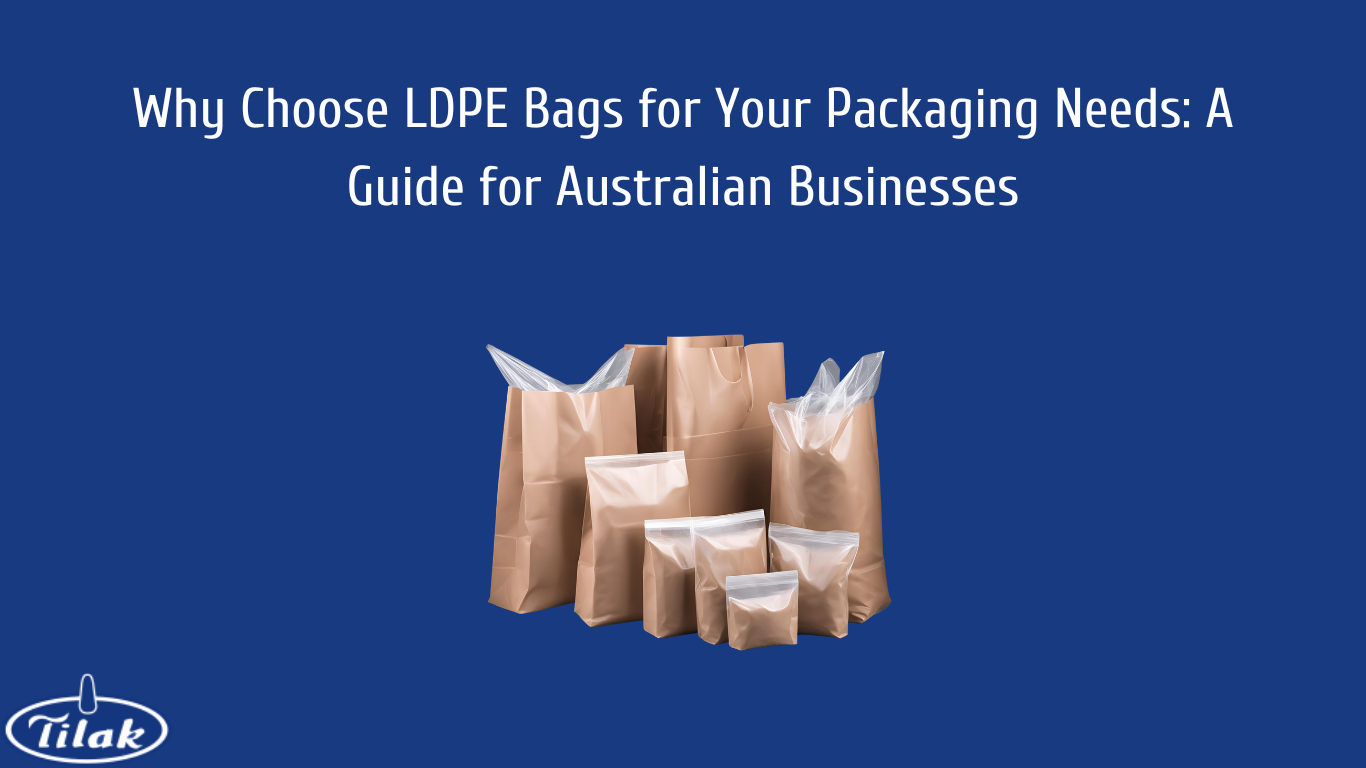In the fast-paced world of retail, manufacturing, and logistics, effective packaging is the backbone of supply chain success. It’s not just about wrapping products; it’s about ensuring that they reach their destination in perfect condition while keeping costs and environmental impact in check. Enter LDPE (Low-Density Polyethylene) bags, a packaging solution gaining traction among Australian businesses. As we explore the merits of these versatile bags, we’ll uncover why they’re becoming a staple for companies across various sectors and how poly bags manufacturers play a pivotal role in delivering quality LDPE bags.
Understanding LDPE Bags
LDPE bags are crafted from low-density polyethylene, a type of plastic known for its resilience and adaptability. Unlike their HDPE counterparts, which are more rigid, LDPE bags are softer and more flexible, making them ideal for a range of applications. They’re often recognized for their transparency and glossy finish, characteristics that enhance the visual appeal of products.
In comparison to other types of poly bags, such as HDPE or biodegradable options, LDPE bags strike a balance between durability and environmental considerations. While HDPE bags offer greater strength, they lack the flexibility of LDPE. Meanwhile, biodegradable bags present an eco-friendly alternative but often come with higher costs and less durability. Understanding these differences is crucial for businesses aiming to cater to specific packaging needs while considering environmental impact.
LDPE bags find applications across various industries. From food packaging to electronics and pharmaceuticals, these bags serve as protective barriers against external elements, ensuring the integrity of products. Their versatility makes them popular among retailers and manufacturers seeking reliable packaging solutions.
Key Advantages of Using LDPE Bags
One of the standout features of LDPE bags is their durability and flexibility. These bags are inherently resistant to impact, tears, and punctures, providing a robust shield for a wide array of products. This resilience ensures that items remain secure during transportation and handling, reducing the risk of damage.
Another significant advantage of LDPE bags is their moisture resistance. They act as effective barriers against moisture, safeguarding contents from water damage. Whether you’re packaging food items, electronics, or textiles, LDPE bags offer peace of mind by preventing moisture-related spoilage or deterioration.
LDPE bags also shine in terms of weight and cost-efficiency. Their lightweight nature translates to reduced shipping costs, a crucial factor for businesses aiming to optimize logistics expenses. Additionally, LDPE bags are economical, making them a budget-friendly choice for companies of all sizes, without compromising on quality.
Selecting a Reliable LDPE Bags Supplier
Choosing the right LDPE bags supplier is crucial for ensuring product quality and consistency. When evaluating suppliers, consider their certifications and adherence to industry standards, which reflect their commitment to quality.
It’s essential to assess the range of sizes and customization options available. A supplier that offers a diverse selection can cater to your unique packaging needs, providing tailored solutions that enhance brand presentation.
Customer service is another critical factor. A reliable supplier should offer robust support and guidance, ensuring a seamless experience from order placement to delivery. Working with local poly bags manufacturers in Australia can further enhance reliability, as they are well-versed in regional regulations and can guarantee timely delivery.
LDPE Bags in Action: Case Studies
Real-world examples underscore the effectiveness of LDPE bags in business operations. Take, for instance, a leading Australian retail chain that incorporated LDPE bags into its packaging strategy. The result? A significant reduction in product returns due to damage, alongside enhanced customer satisfaction.
Testimonials from business owners highlight the positive impact of LDPE bags. One manufacturer noted the ease of integration into their existing packaging processes, while another praised the cost savings achieved through reduced shipping expenses.
These case studies exemplify how LDPE bags can elevate packaging strategies, offering tangible benefits for businesses across sectors.
Tips for Implementing LDPE Bags in Your Packaging Process
Integrating LDPE bags into your packaging operations requires careful planning. Best practices include assessing your supply chain to identify areas where LDPE bags can enhance efficiency and reduce costs.
Proper handling, storage, and disposal of LDPE bags are also essential. Ensuring that staff are trained in best practices can prevent damage and maximize the lifespan of these bags.
Consider collaborating with your LDPE bags supplier to develop strategies that leverage the full potential of these versatile packaging solutions. Their expertise can guide you in optimizing usage and achieving your packaging goals.
Conclusion
In conclusion, LDPE bags offer a compelling solution for businesses seeking durable, moisture-resistant, and cost-effective packaging. Their flexibility, coupled with advancements in recycling technologies, positions them as a viable choice for environmentally-conscious companies.
Partnering with reliable poly bags manufacturers, especially those based in Australia, ensures access to high-quality LDPE bags tailored to your specific needs. Whether you’re a retailer, manufacturer, or logistics provider, integrating LDPE bags into your operations can enhance efficiency, reduce costs, and delight customers.
For businesses eager to explore the benefits of LDPE bags, now is the time to take action. By choosing the right supplier and implementing best practices, you can transform your packaging strategy and set your business on a path to success.

